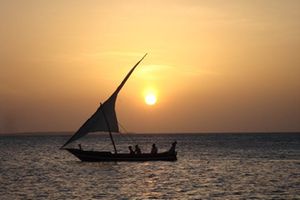NDC drops Lake Natron soda ash project

National Development Corporation officials inspect soda ash exploration pools at Engaruka. PHOTO | NDC
What you need to know:
Instead, it has turned to the Engaruka soda ash project, NDC corporate affairs manager Abel Ngapemba has confirmed.
Dar es Salaam.The National Development Corporation (NDC) has abandoned the controversial Lake Natron soda ash project as pressure from environmental activists has become unbearable.
Instead, it has turned to the Engaruka soda ash project, NDC corporate affairs manager Abel Ngapemba has confirmed.
“We are doing a techno-economic study on the project,” he told The Citizen last week.
In March last year, NDC was reportedly striving to get an investor for the Lake Natron project.
According to NDC’s 2017 report, $4 billion was needed for the Engaruka project to extract one million tonnes of soda ash annually.
Lake Natron is located near Oldonyo Lengai in Rift Valley.
NDC intended to get 500,000 tonnes of soda ash annually.
A 2016 report by NDC showed that there were soda deposits of 4.7 trillion tonnes that could last for 540 years.
Mr Yukundus Mhonda, of the University of Dar es Salaam’s Department of Aquatic Sciences, said as the environmental impact assessment was yet to be okayed it was difficult to attract the investor for project, which triggered environmentalists’ protests.
Since 2008, the Lake Natron Consultative Group has been protesting against the project, saying its site was important for breeding of laser flamingos.
Lake Natron is the most important breeding site for lesser llamingos in the world, according to BirdLife International. East Africa has at least 2.5 million lesser flamingos, representing three-quarters of the world’s population and most of them are hatched at Lake Natron, reads part of the 2008 report of International Union for Conservation of Nature (IUCN).
“It is the only significant and regular breeding site in East Africa for three quarters of lesser flamingos in the world.”
Lesser flamingo is classified as near-threatened by BirdLife on the IUCN Red List. It is listed on Appendix II of CITES and on Appendix II of the Convention for the Conservation of Migratory Species.
Since 2008 when Tata Chemical withdrew from the project, there has been no other prospective investor.
Soda ash, chemically known as sodium carbonate, is an essential constituent in the manufacturing of all kinds of glasses, production of detergents, industrial chemicals; water treatment, paper industries, petroleum refining, textile industries, flue gas desulphurisation and mineral processing.
NDC is optimistic of getting a prospective investor for the Engaruka project.
The Engaruka Basin is estimated to have 4.68 billion cubic metres of brine with an annual replenishment rate of 1.9 million cubic metres, according to an NDC report.




